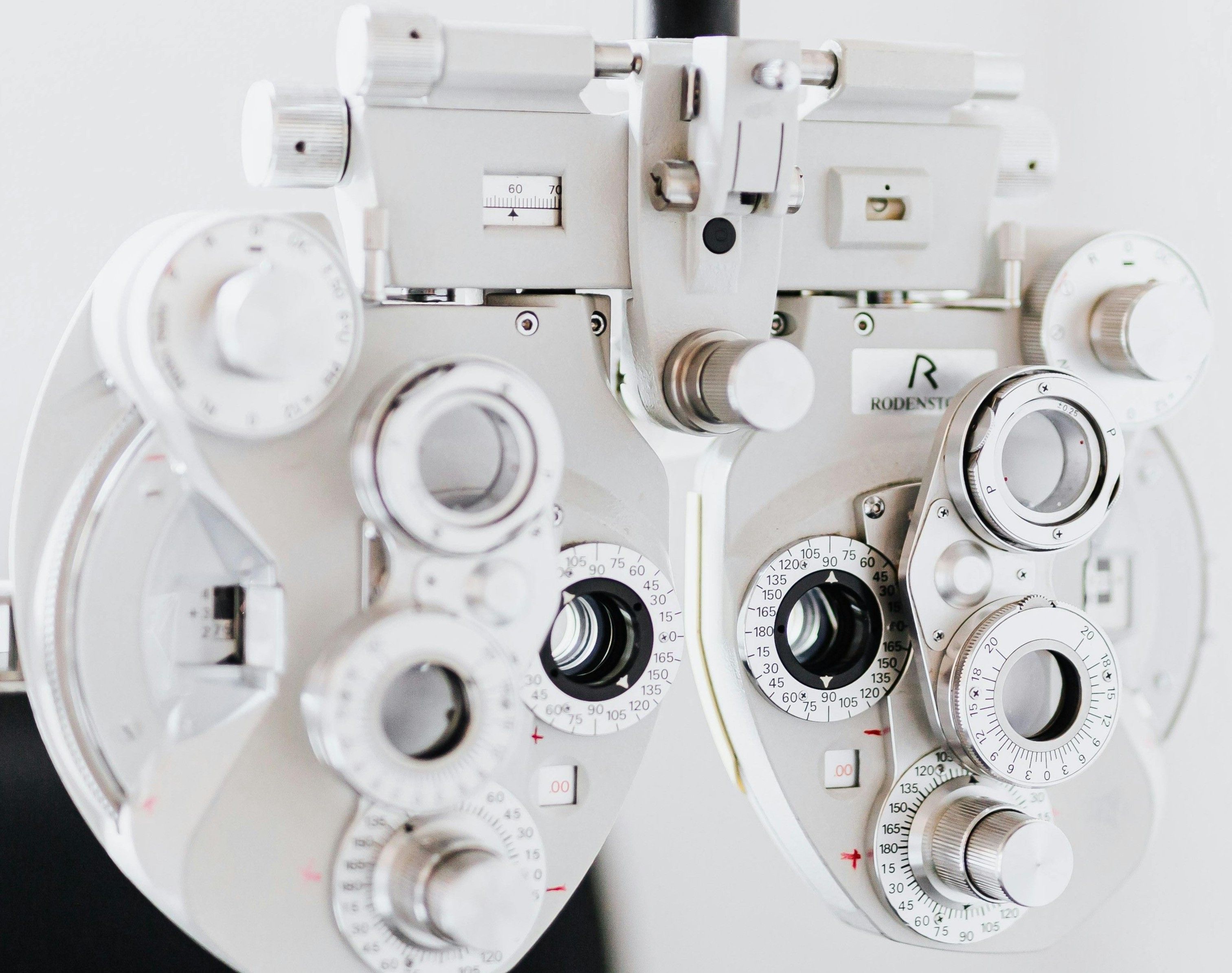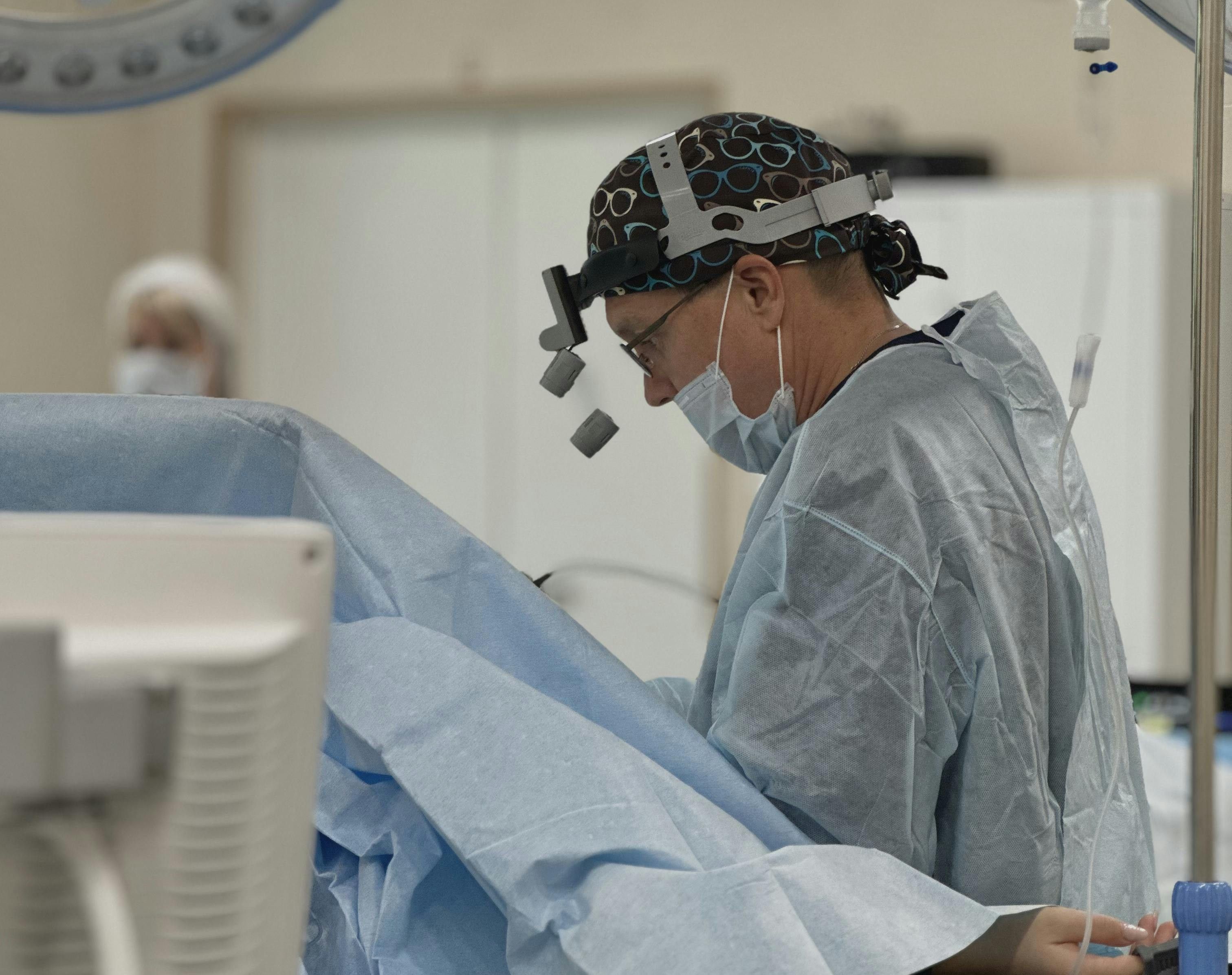I-Care Network
For Ophthalmology

The I-Care Network (ICN) is a private initiative uniting ophthalmologists, anaesthesiologists and surgical facilities in South Africa in a single Designated Service Provider (DSP) network with medical schemes to improve access, quality and co-ordination in private eye care.
It is an Ophthalmology oriented network for patients with eye conditions that utilize clinical protocols designed by ophthalmologists, as well as custom designed data systems which are combined into a managed care environment by means of procedure driven, value-based alternative reimbursement models.
The ICN is governed by a board of directors and is the first of its kind for Ophthalmology in South Africa.
ICN MEMBER LOGIN APPLY FOR MEMBERSHIP
About the I CARE NETWORK
The I-Care Network (or abbreviated, the "ICN") is a private company with purpose of acting as a mouthpiece for procedure oriented value-based contracting for the specialties of ophthalmology and anaesthesiology in South Africa. It is a patient centered eyecare network, governed collaboratively by input from both specialties as well as the surgical facilities where these procedures are performed, utilizing
Quality metrics and data,
Evidence based, protocol driven services, designed within the relevant specialties, and
Managed care principles.
This implies interaction with the Medical Funding Industry, Government and other stakeholders in the offering of these procedure oriented value-based alternative reimbursement models (ARM’s).
The ICN network consist of private practitioners from the specialties of ophthalmology and anaesthesiology, with the inclusion of the surgical facilities where procedures are performed in a combined designated service provider network. Ophthalmologist members in the ICN network must also be active members of OSSA, as well as active shareholders of the OMG. Hospital service providers may consist of any hospital where private ophthalmologists render their services, namely the three corporate private hospital groups (Netcare, Mediclinic and Life Healthcare), as well as the independent surgical facilities of the National Hospital Network (the NHN) and the Day Hospital Association of South Africa (DHASA).
Since there are currently discrepancies in networks formed by the funding industry where an ophthalmologist may be part of a specific funding network, while the hospital where the doctor is working may not be part of the same network, the goal of the ICN is to align these entities into a single network with a broad representation to enhance access to appropriate care for members of medical schemes across South Africa.
In terms of the quality of services, the network draws on the professional expertise from the professional sub-societies of ophthalmology in South Africa in their development of academically sound protocols for the treatment and management of the various ophthalmic conditions through a memorandum of understanding to ensure quality, patient focused care. The ICN feeds its data into a comprehensive "Big Data" database, the National Eye Registry Database (abbreviated as the “NERD”). Collecting quality data forms an integral part of the ICN. This data feeds the required information into a voluntary peer review system, which ensures that high quality services are made available to patients requiring ophthalmic care. A data sharing arrangement is in place with participating surgical facilities and hospitals, where comprehensive information per surgical or treatment event is collated into this single "Big Data" repository, with secure access rights to authorized parties for the purpose of analysis and profiling, while still ensuring anonymity of patients, practitioners and facilities.
It is foreseen that a variety of alternative reimbursement models (ARMs) and value based contracts (VBCs) will arise from this venture in future, jointly designed by the participants in the network. The aim is to offer various ARMs and VBCs per event to the Funding Industry, which will include the ophthalmologist, anaesthesiologist and surgical facility as a single DSP.
It is envisaged that all procedures performed on members of schemes who make use of the ICN, will be pre-authorized by the ICN by means of a proprietary software platform, utilizing artificial intelligence for fast on-line responses.
Governance in the ICN occurs through its Board of Directors.
The ICN is the first of its kind for ophthalmology, and possibly the first initiative of its kind for the whole of medicine in South Africa.
The ICN – true value-based managed eye care from the medical profession for the benefit of their patients, with a balanced approach among the funding industry, private practitioners and the surgical facilities where procedures are performed.




Introduction
The purpose of the ICN is to be a patient centered eyecare network, which is governed collaboratively by input from the ophthalmology and anaesthesiology professions and surgical facilities using peer review, quality metrics and delivering evidence based, protocol driven services.
The establishment of this network is in direct response to funder Designated Service Provider (DSP) networks, which are often facility based and do not consider the ophthalmologist as the primary entry point of eyecare. Patients do not consult with hospitals – they consult with healthcare professionals. Patients are very seldom aware that they may require eye surgery when booking a consultation. The current market trend of creating separate practitioner and hospital DSPs offer little value in an environment where patients should be the main focus of care. This is especially important in a high-tech discipline such as ophthalmology, where technology has a very short half-life and access to cutting edge equipment, high quality facilities, and suitably trained staff is vital. Merely placing a hospital on a DSP network provides no guarantee that it has the required equipment, facilities or skills available to render quality ophthalmic surgical services. The primary requirement for ophthalmic surgery is the ophthalmologist, and facilities cannot reasonably be considered a DSP if they do not have attending ophthalmic services associated with that facility.
Some DSPs contain many facilities that are not equipped or staffed to render ophthalmic services. There are also ophthalmologists who are unable to render surgical services to patients in facilities in which they normally operate. This is to the detriment of quality clinical care if ophthalmologists have to operate in facilities which they do not normally use. It is also to the detriment of certain surgical facilities which are suitably equipped, but not on a DSP network, as patients might be faced with co-payments for using such facilities, even when they present the least clinical risk due to the ophthalmologist regularly operating there.
Belonging to a practitioner only DSP network is also no guarantee of quality of service, as the other elements of the service are ignored. Where such an ophthalmologist operates in a non-DSP facility, patients could still be faced with a co-payment as the service is rendered outside the medical scheme network. Patients are therefore faced with a co-payment for using a non-network facility, often through no choice of their own, or have to face increased risk factors where an ophthalmologist is forced to operate in a theatre facility which the surgeon does not normally use. Patients with financial constraints on lower scheme plan options are often those that have the highest probability of facing a situation where network ophthalmologists do not operate in a network facility. These patients are the most vulnerable and often do not have the financial resources to make co-payments or to fund a second consultation with an ophthalmologist who does operate in a medical scheme network facility.
The approach of the ICN is to establish a patient focused network which consists of ophthalmologists, the anaesthetist/s routinely associated with the ophthalmologist, and the facilities in which they normally operate, which will result in improved patient access and outcomes at the same, or even lower costs per event. The aim of the network is to provide value-based care, with a focus not only on cost, but also on quality clinical care and outcomes measurement. This network will be governed jointly by the profession and hospitals, using evidence based protocols, agreed quality metrics and peer review. Various outcome measure tools ensure that clinical outcomes are recorded and peer reviewed by the profession. Establishing a value-based care network is also in line with recommendations by the Health Market Inquiry, which recommends that medical schemes should participate in value-based purchasing and no longer strictly use fee for service reimbursement. The ICN network have outcome based measures, which allows for true value-based contracting with consideration of costs, but an active focus on quality outcomes.
The ICN also forms an ideal platform to negotiate with the NHI Fund for ophthalmology, should it materialize in future for the purchasing of universal eyecare services from the private sector.
Network Components
The Ophthalmologist
Private ophthalmologists who are members of the Ophthalmology Management Group (“OMG”) form the core of the network as the primary clinical entry point into the network. From there, patients are clinically managed and the surgical services are conducted within the linked network facilities where surgery is clinically indicated.
The Anaesthesiologist
Anaesthesiologists working within the linked network facilities in association with the network ophthalmologists, form part of the combined DSP.
Facilities
The network facilities are envisioned to eventually include the 148 hospitals where network ophthalmologists currently render their surgical services. The network is expected to accommodate specialist eye hospitals, as well as acute and day hospitals, making it all inclusive from a facility point of view, while removing eyecare from the scheme facility DSP arrangements. The network includes all hospital groups and independent surgical facilities as long as these are willing to abide by the terms of the network regarding entry criteria, governance and tariffs.
Contract and Payment arrangements
It is foreseen that a variety of alternative reimbursement models (ARMs) and Value Based Contracts (VBCs) will arise from this venture, jointly designed by the participants in the network. The aim is to offer value-based ARM mechanisms per procedure to the Funding industry, which include the ophthalmologist, anaesthesiologist and surgical facility.
Due to the alignment of doctors and hospitals within the network, this will result in the optimization of resources and efficiencies from both parties.
Tariff negotiations are done through the network with input from all parties concerned. All billing are submitted directly to the medical scheme as a global fee by means of a proprietary software platform, after which payment is distributed by the ICN as a bundled payment to all service providers at the agreed network rate. For exclusions to the global fee, invoices are submitted to the ICN, which then verifies the same for conformity to its protocols before forwarding it to the medical scheme. Honoring of the claims is by direct payment into the service provider's bank account.




Governance
Board of Directors and Committees
Governance in the ICN is by means of a Board of Directors, which consist of both a practicing ophthalmologist and anaesthesiologist, along with an independent director. The Board is supplemented by sub-committees looking at various aspects of governance.
The National Eye Registry Database
Within the context of ICN, the patient remains the primary focus of the ophthalmology profession. Cost containment and network initiatives cannot be implemented without measuring the impact that it has on quality health outcomes for the patients.
Central to the creation of this value-based network, therefore, is the ability to link outcomes to the cost per event, thereby being able to determine the value of the proposed contract on an ongoing basis. The National Eye Registry Database (NERD) is an online secure “Big Data” database, accessible via www.nationaleyeregistry.com through a secure login to those authorized with the applicable rights of access. It is easy to use, accessible, available 24/7, POPIA compliant, as well as compliant with all data protection legislation.
Both clinical and financial information are captured within the NERD per event via a secure link with the ICN software platform. This novel project has accordingly the ability to provide information on value-based care, which is in line with the recommendations of the Health Market Inquiry. Since a data link between ICN and the NERD is functional, it is possible to perform a value calculation per event, which enables the calculation of an average value for all events, depending on the filter criteria.
As part of this network agreement, feedback on the performance thereof is available to the medical scheme every year during May and November, or as required by it for a specific contract.
The NERD is also applied as a pre-authorization tool, which enables the ICN to monitor patient health outcomes and build scheme rules and/or motivations directly into it, reducing administration and enabling improved service for patients requiring surgery.
The NERD utilize various outcomes measures, such as those provided by the International Consortium of Healthcare Outcomes Measures (ICHOM - www.ichom.org). Hospital reported outcomes data are also included in the NERD. Anonymized aggregated outcomes data can be shared with all authorized participants in the network. Individual facilities are able to compare themselves to aggregated data which enables the service provider to benchmark itself against its peers. Profiling and peer review also form part of the outcomes data with concurrent consideration of the relevant claims data per event. The above access is strictly controlled and granted through a secure portal to those vetted and registered for this service.
Protocols
The ICN utilize academic clinical protocols, drafted by the professions of ophthalmology and anaesthesiology to ensure quality, patient focused care. These are approved by the relevant specialist and sub-specialist societies, whichever is applicable through memoranda of understanding with the latter. Use of these protocols always form part of the network agreement, as clinical quality cannot be ensured if care is not delivered according to the evidence available. Examples of such protocols to which the ICN subscribe are the Cataract Preferred Practice Patterns from the Southern African Society of Cataract and Refractive Surgery, the SA Glaucoma Society Glaucoma Protocol, The SA Vitreoretinal Society protocols for AMD, RVO, DME and others.
Peer Review
Peer review of Ophthalmologists is done through the Peer Review and Profiling Committee. Peer review occurs in line with the requirements as set out in the Memoranda of Understanding with both the Ophthalmological Society of South Africa (OSSA) and the Ophthalmology Management Group (OMG). Hospitals are reviewed by a joint Hospital/Ophthalmologist committee, based on agreed clinical and claims metrics included in such a review, while anaesthesiologists are reviewed and profiled in similar manner.

Contracting
Cataract
Cataract is one of the most common conditions affecting the human population and thus is an important cost item for healthcare funders. While being very common, it is also treated by means of one of the most successful surgical interventions on the human body. Cataract surgery is one of the highest technology surgeries in healthcare and advancing steadily. The past 60 years have seen a host of improvements and innovations in the surgical management of cataracts – from performing an intracapsular cataract extraction with the provision of aphakic glasses afterwards, to modern day surgery done by means of sophisticated techniques and technology, which allows for ambulatory surgery in most cases, fast recovery and excellent outcomes. These outcomes are made possible by advanced technology, which improve the quality of lives and minimize complications.
The term “cataract” is at its core a collective name for a range of conditions that affect the transparency and functioning of the human lens. These may range from a congenital cataract, affecting a new-born, to a traumatic cataract with zonular dehiscence or capsular rupture, a senile cataract with a rock-hard nucleus, a posterior sub-capsular cataract with visual aberrations during night time driving, cataract associated with ocular inflammation, diabetes, or other metabolic diseases, phaco-morphic or phaco-lytic changes leading to secondary ocular pathology, anomalies of the natural lens – and so the list continues. All of the above require specific surgical strategies – there is no “one size fits all”. It follows logic that this is one of the reasons for the variance seen in cataract billing practices.
The heterogeneity of the condition is probably the largest misconception amongst the patient population, the insurance industry, Government, and even amongst optometrists and medically qualified colleagues in other fields of medicine.
Some of the largest medical conferences in the world are held on the subject of cataract surgery and often spans across 3 – 4 days of a full program with an attendance in excess of 15 000 delegates from around the world.
To develop the ability to safely perform intra-ocular surgery, implies a full-time position as an ophthalmology registrar at one of the University Departments in South Africa for a minimum period of 5 years, or other international institutions accredited by the HPCSA. To become a skilled cataract surgeon requires further experience in the field, numbering a minimum of a thousand procedures. In many countries, cataract surgery has become a sub-specialist post-graduate training process.
There are currently six sub-specialties operational within the field of Ophthalmology in South Africa, of which the sub-specialty “Cataract and Refractive Surgery” constitutes the largest. A biennial conference covering this field is hosted for the past 40 years by the South African Society for Cataract and Refractive Surgery (SASCRS) where colleagues freely exchange academic information and new international trends. These conferences are attended by a variety of ophthalmologists – from those functioning in general ophthalmology practice to those focusing exclusively on the sub-specialty.